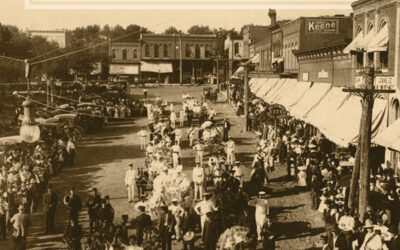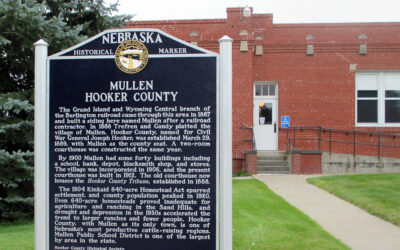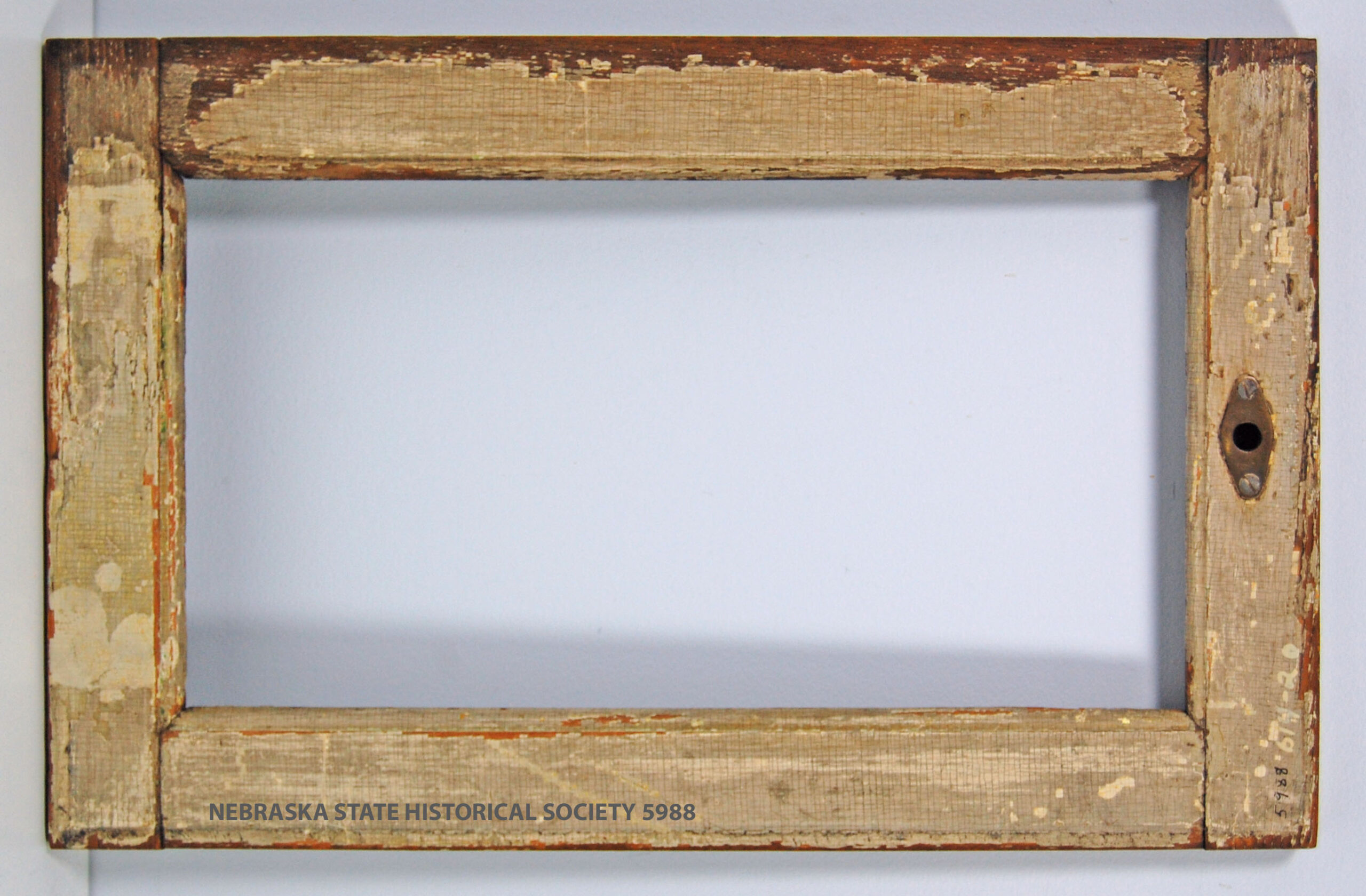
Source: Mrs. Ethel Carleton
If you had to guess the history of this object, what would you think? Perhaps an old, well-used picture frame? Actually its original purpose was a window frame, and it’s part of a much bigger story.
This window frame was from the train car that carried President Abraham Lincoln’s body to Springfield, Illinois for interment. The lavish train car was constructed for the President between 1863 and 1865. It was completed shortly before his assassination, so the only time it was used by the President was to carry his body on a twelve-day trip through seven states to Springfield, Illinois.
The car was 48 feet long. There were twelve main windows and sixteen clerestory windows, which had elaborately etched glass. It appears that this was a window frame for one of the clerestory windows.
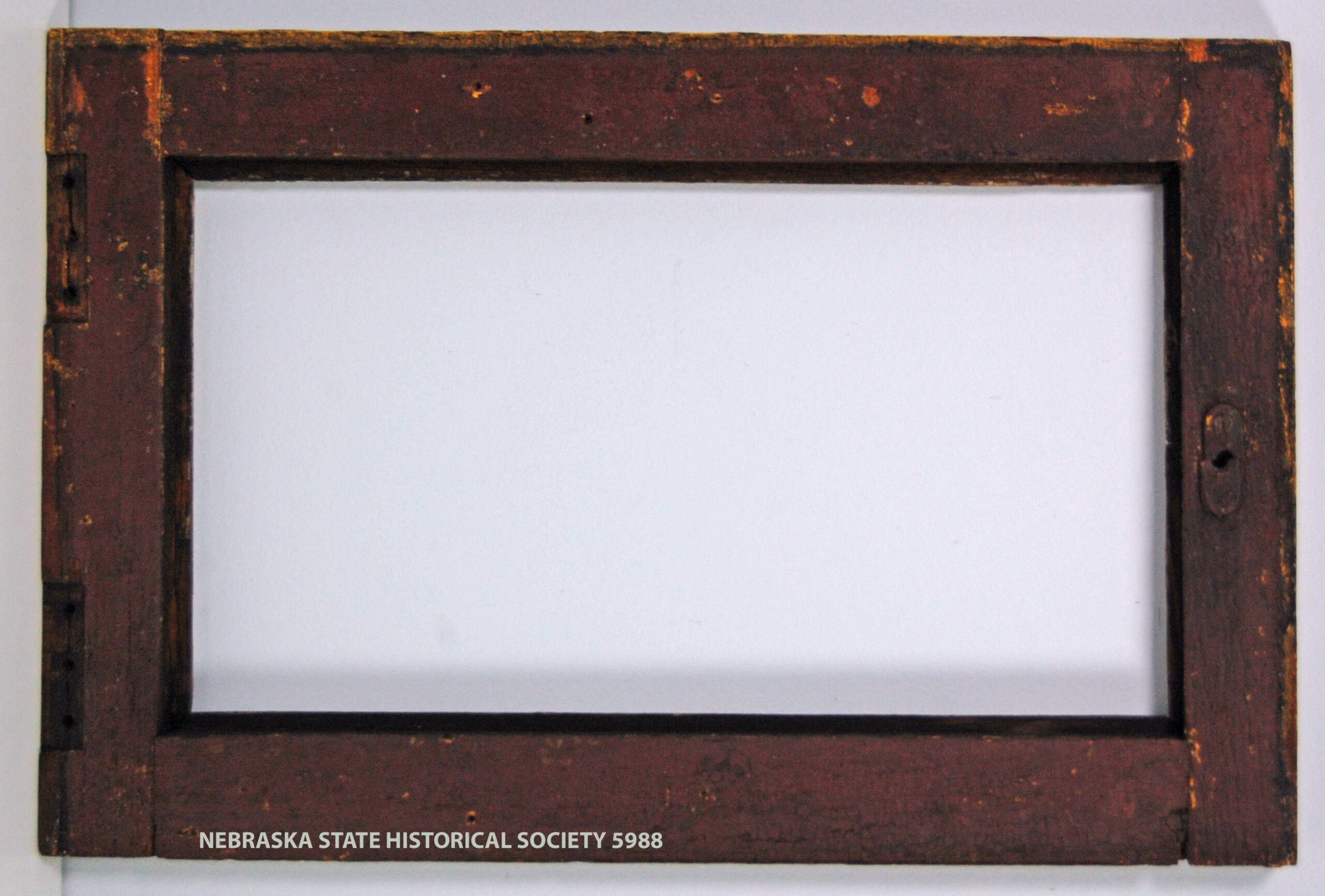
- Here is a view of the other side, which would have been visible from the exterior of the train. Source: Mrs. Ethel Carleton
In 1866 the train car was purchased by the Union Pacific railroad and taken to Omaha, Nebraska. It was used by the Union Pacific for a variety of purposes. For example, it was part of the excursion train to mark the completion of track at the 100th Meridian. When not in use, it was stored on the UP shop grounds. Many people were said to have visited it there. It was also used there as accommodations for government and other officials. As time went on, it was used for less formal purposes by UP Superintendents and foreman to live in at work sites.
Around 1870 the Union Pacific sold the car to the Colorado Central Railroad Company and it was painted bright yellow. When the Union Pacific absorbed the Colorado Central in 1878, it was used as a work train and sometimes as a bunk car or dining car for crews.
In 1898 the car underwent some restoration and was exhibited at the Trans-Mississippi Exposition in Omaha. Then, in 1903, it was sold to Franklyn B. Snow who exhibited it at the St. Louis Worlds’ Fair and traveled it to other cities. After Snow’s death in 1905 it was purchased by Thomas Lowry of Minneapolis. He intended it as a gift to the city, but when the city couldn’t come up with the funds for a suitable museum, Lowry moved it to land he owned and was in the process of developing. On March 18, 1911, a grass fire enveloped the area and the car was burned beyond repair. Although, it is believed that the manager of the land company allowed people to take pieces as souvenirs. The car was essentially scrapped.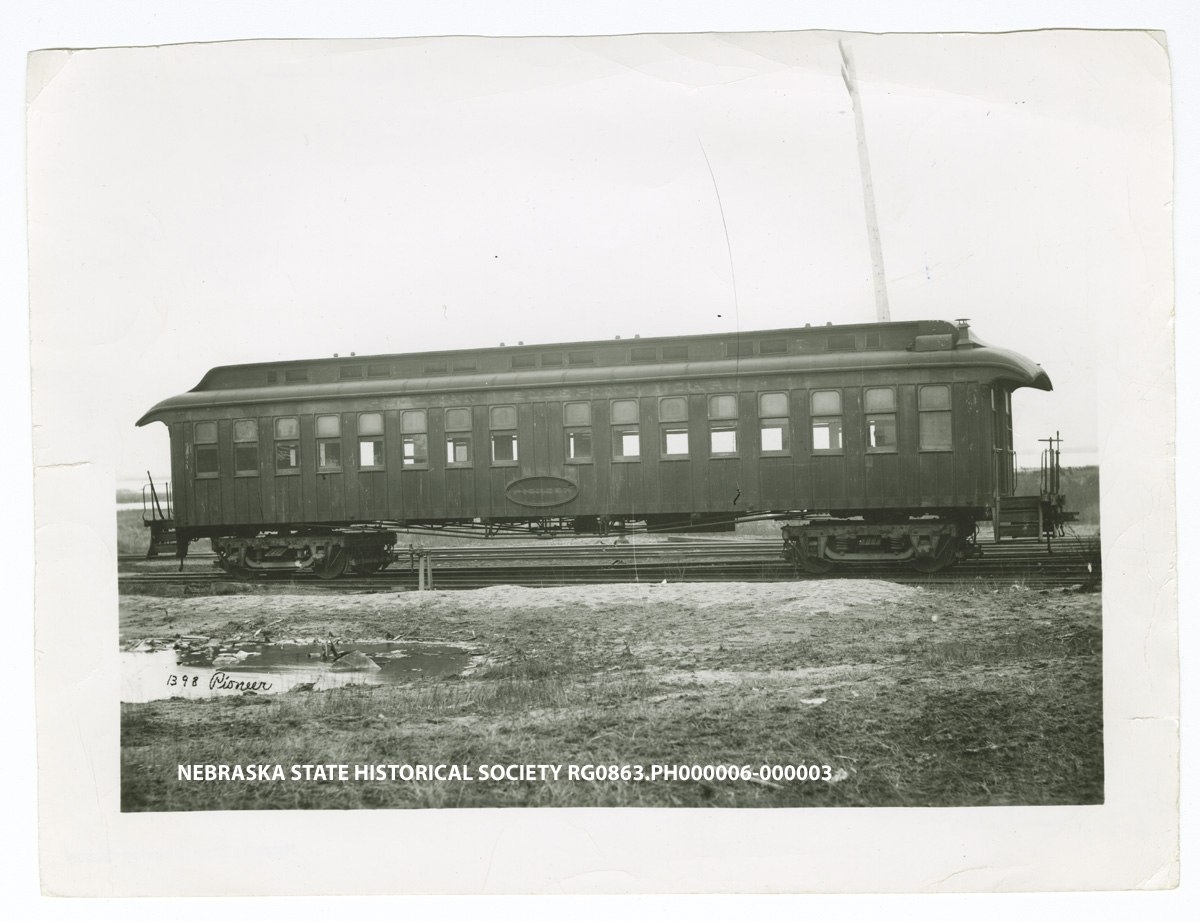
Photograph of the funeral car, thought to have been taken around 1890. Source: RG0863.PH000006-000003
This window frame was donated to the Nebraska State Historical Society in 1945 by Mrs. Ethel Carleton of Omaha. The Carletons had used it as a picture frame for a color lithograph of President Lincoln, and said that it was removed from the car when it stood in the Union Pacific shop yards in Omaha. It is unknown when this particular window was removed from the car. There are remnants of yellow paint, indicating that it was removed after the car was painted yellow by the Colorado Central. Some of the later photos of the car appear to show that the clerestory windows were removed or covered over. Perhaps the windows were sold or given away as souvenirs as the car was used for more mundane uses and fell into disrepair.
Thanks to the Carletons for saving this unique piece of Abraham Lincoln and Union Pacific history.
–Laura Mooney, Museum Curator
(October 2010)

